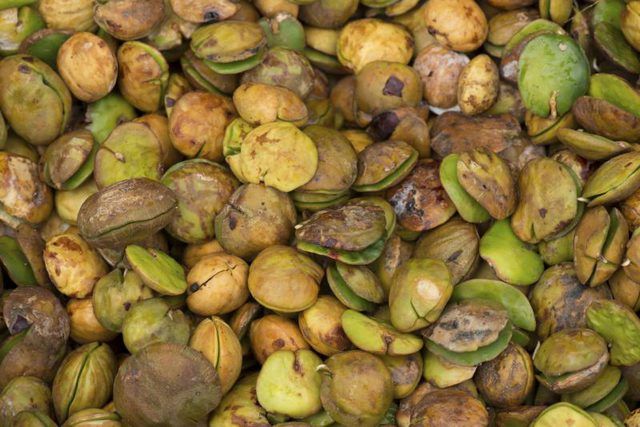Bulbs
Flower Basics
Flower Beds & Specialty Gardens
Flower Garden
Garden Furniture
Garden Gnomes
Garden Seeds
Garden Sheds
Garden Statues
Garden Tools & Supplies
Gardening Basics
Green & Organic
Groundcovers & Vines
Growing Annuals
Growing Basil
Growing Beans
Growing Berries
Growing Blueberries
Growing Cactus
Growing Corn
Growing Cotton
Growing Edibles
Growing Flowers
Growing Garlic
Growing Grapes
Growing Grass
Growing Herbs
Growing Jasmine
Growing Mint
Growing Mushrooms
Orchids
Growing Peanuts
Growing Perennials
Growing Plants
Growing Rosemary
Growing Roses
Growing Strawberries
Growing Sunflowers
Growing Thyme
Growing Tomatoes
Growing Tulips
Growing Vegetables
Herb Basics
Herb Garden
Indoor Growing
Landscaping Basics
Landscaping Patios
Landscaping Plants
Landscaping Shrubs
Landscaping Trees
Landscaping Walks & Pathways
Lawn Basics
Lawn Maintenance
Lawn Mowers
Lawn Ornaments
Lawn Planting
Lawn Tools
Outdoor Growing
Overall Landscape Planning
Pests, Weeds & Problems
Plant Basics
Rock Garden
Rose Garden
Shrubs
Soil
Specialty Gardens
Trees
Vegetable Garden
Yard Maintenance
What Are the Functions of Seeds in a Plant?
What Are the Functions of Seeds in a Plant?. Plants originally came from marine environments, where they relied on water to carry their gametes in order to reproduce. When plants moved onto land, water wasn't always present for gamete transfer. Seed plants -- the gymnosperms and angiosperms -- developed the strategy of enclosing the tender...

Plants originally came from marine environments, where they relied on water to carry their gametes in order to reproduce. When plants moved onto land, water wasn't always present for gamete transfer. Seed plants -- the gymnosperms and angiosperms -- developed the strategy of enclosing the tender germplasm within a seed that resists harsh terrestrial environments. Seed sizes and shapes are enormously variable, ranging from dustlike orchid seeds to the very large seed of the coconut palm (Cocos nucifera).
Seed Basics
Understanding seed structure is helpful in understanding seed functions. Seeds have an outer seed coat that varies from thin and papery to rock-hard. Inside the seed is the embryo plant and usually some sort of nutrition called endosperm. The seed leaves, or cotyledons, can also hold a food supply. The food supply supports the sprouting seedling until it grows a root and can make its own food. Seeds can also have accessory structures attached to them that come from the ovary walls or different persistent parts of the flower.
Species Perpetuation
The most basic function of a seed is to keep a species in existence. All the different functionality mechanisms work together to keep the plant embryo inside the seed alive until conditions are correct for the seed to germinate with some chance of the seedling's survival. A number of factors influence seed germination, including the amount of sunlight it receives as well as moisture and temperature. A species becomes extinct if seeds can't produce seedlings that flower and make seeds in turn.
Seed Dispersal
If seeds drop next to the mother plant, seedlings become crowded and compete with each other as well as the parent plant, which detracts from the survivability of the species. Seeds travel by means of water, wind and passing animals. Coconut, hardy to U.S. Department of Agriculture plant hardiness zones 10b through 11, floats on seawater. Annual plants and grasses have lightweight seeds carried by wind. Some seeds disperse embedded in structures formed by the ovary. Examples are edible fruits such as apples (Malus domestica), hardy in USDA zones 3 through 8 or berries eaten by birds. The seeds inside edible fruits generally have a tough seed coat that survives passage through an animal's digestive tract. Other seeds are embedded in structures equipped with spurs or hooks and hitchhike on pets, wildlife and hikers.
Living Time Capsules
Plants that grow in tough environments may go for a long time, sometimes decades, before favorable germination conditions for a particular species occurs. In such cases, seeds are like programmed time capsules, lying dormant in the soil awaiting proper conditions to sprout. Annual desert wildflowers demonstrate seed longevity. In Arizona's Sonoran Desert, good desert wildflower blooms occurred only four times in the six decades between 1940 and 1998. The all-time winner for seed longevity is sacred lotus (Nelumbo nucifera). According to a 1995 report, a 1,300-year-old seed from a lake bed in China sprouted and grew.
Seedling Food Source
Seeds provide the embryo they contain with enough food to carry them through germination. Endosperm can contain carbohydrates, fats or proteins. Small, quick-sprouting, quick-growing seeds ordinarily don't contain a lot of endosperm. For seeds that endure harsh conditions for extended periods, a large supply of endosperm allows seed and seedling survival. Coconuts survive floating over thousands of miles to reach coastal beaches, where they can take many months to germinate. The seed provides abundant endocarp in the form of coconut meat and milk to last it through this period.